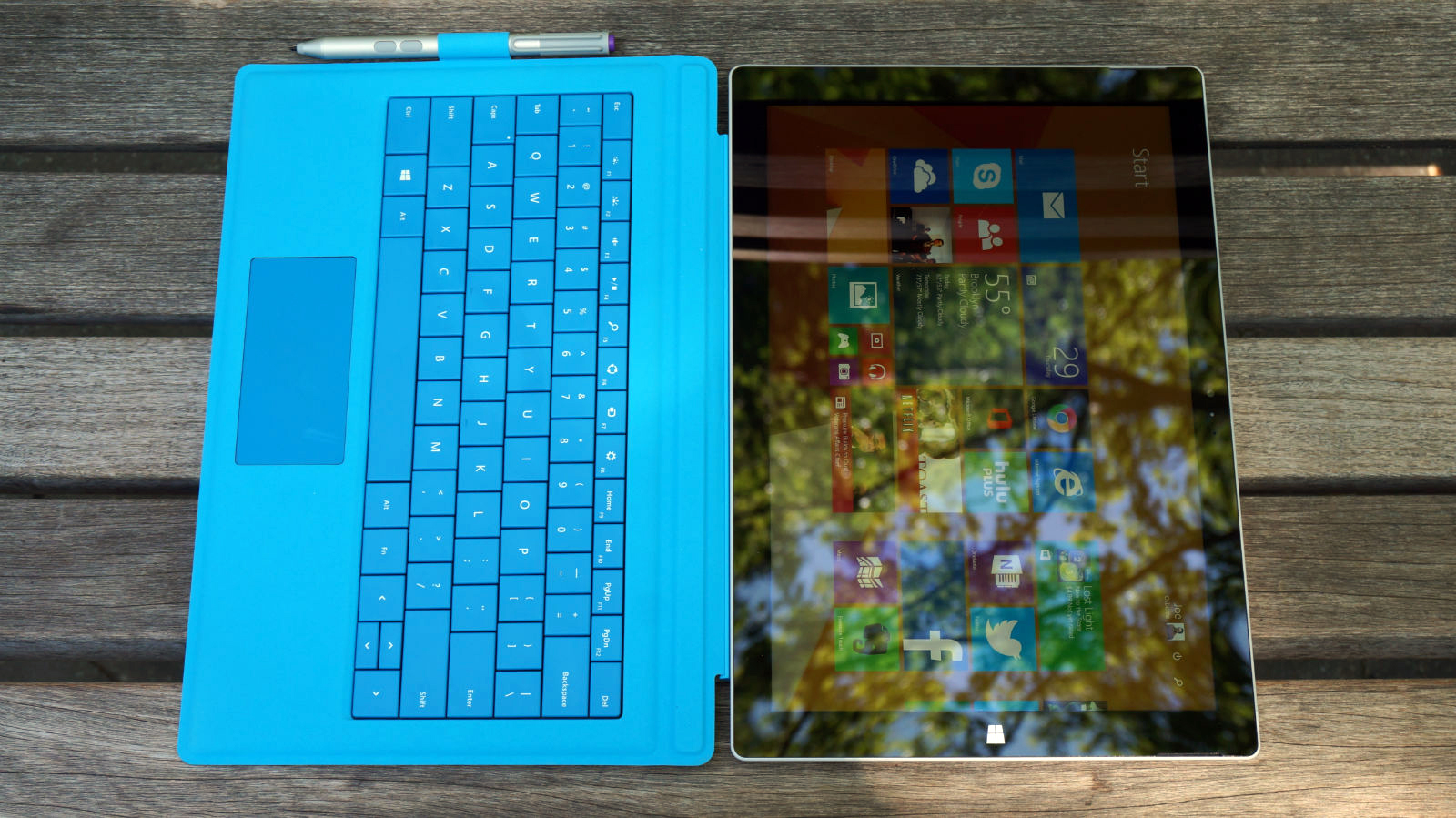iPad fatigue creates opportunity for Windows hybrids
Second consecutive quarter of tablet decline

Even as the consumer tablet market is contracting, there is still growth in the business tablet market with devices like the Surface Pro 3 and two-in-one hybrid slates.
IDC reported that the tablet market is in decline for the second consecutive quarter in the first quarter of this year. This isn't surprising given that Apple had announced slumping iPad sales in its most recent earnings call, with CEO Tim Cook admitting that the company's tablet sales have been cannibalized by the introduction of larger iPhones - like the iPhone 6 Plus - and by the MacBook.
The study noted a 5.9% year-over-year decline in the tablet market, with 47.1 million units shipped during the quarter. Apple is still the tablet leader with 26.8% of the market as it shipped 12.6 million iPads.
Growth of more powerful tablets
Despite declines in the consumer space, more productive two-in-one tablets are seeing an increase in adoption.
"Although the tablet market is in decline, 2-in-1's are certainly a bright spot," said Jitesh Ubrani, senior research analyst, Worldwide Quarterly Tablet Tracker. "While 2-in-1, or detachables, still account for a small portion of the overall market, growth in this space has been stunning as vendors like Asus, Acer, and E-FUN have been able to offer products at a fantastic value; and vendors like Microsoft have been able to drive growth at the high end with devices like the Surface Pro 3."
These devices, as Microsoft's marketing for its Surface line plays up, compete not only against consumer-grade tablets, but are also powerful enough to replace Ultrabooks and notebook computers. With a keyboard dock, two-in-ones are great for content consumption and creation.
Examples of two-in-one hybrids include the Dell Venue Pro 11, Acer Aspire R13, Lenovo Yoga 3 Pro and Asus Transformer Book Chi T100.
Sign up to the TechRadar Pro newsletter to get all the top news, opinion, features and guidance your business needs to succeed!
Hybrid convertibles, as they're sometimes referred to, allow consumers to save on costs as they only need to buy one device instead of two. Executives benefit in that they only need to carry one device when traveling, saving on weight and management of data.
Additionally, there is also growth in cellular-enabled tablets. With a 4G or 3G radio on-board, tablet owners can access data and information from anywhere, even outside the reach of a Wi-Fi network.
Is Windows leading the tablet charge?
With the growth of two-in-one devices in the market, Windows may also be a contributing factor. Although there are a number of two-in-one Android tablets on the market today, the IDC report mentions the Surface Pro 3 and the Asus Transformer Book Chi line, both powered by Windows.
For enterprise users, Windows tablet offer more flexibility, security and performance than an iPad. Support for TPM cards and access to legacy Win32 programs may make these tablets more attractive to business users. Additionally, with the upcoming release of Windows 10, Microsoft is making the Windows experience better between different screens and form factors with Continuum.
Continuum allows the OS to optimize the user experience for touch input in tablet mode, but if it senses that the tablet is docked into a keyboard, it can switch to a desktop mode for optimized keyboard and mouse control.
Windows hybrids give users the flexibility of having a tablet or the productivity of a notebook depending on how users use the device. Despite falling sales in the general tablet industry, Microsoft reported a 44% revenue increase in its Surface business.
By the numbers
After Apple, Samsung hold its second place position with 19.1% of the market after a 16.5% year-over-year decline. Lenovo's 5.3% of the market secures it a third place finish, while Asus and LG round out the top five with 3.8% and 3.1%, respectively.
Tablet lifecycle
One factor that wasn't mentioned in the IDC report is the tablet lifecycle. Unlike smartphones, tablet owners may hold on to their devices longer and may not follow the annual or bi-annual upgrade cycles.
As the consumer tablet market gets more saturated, sales may be more dependent on upgrades. Additionally, as in Apple's case, the growth of phablets, or smartphones with larger screen sizes, may mitigate the need to have a tablet as users may not have to compromise on productivity or usability with a slightly smaller display compared to smaller tablets, like the iPad mini 3.
- Read our picks for the top business tablets